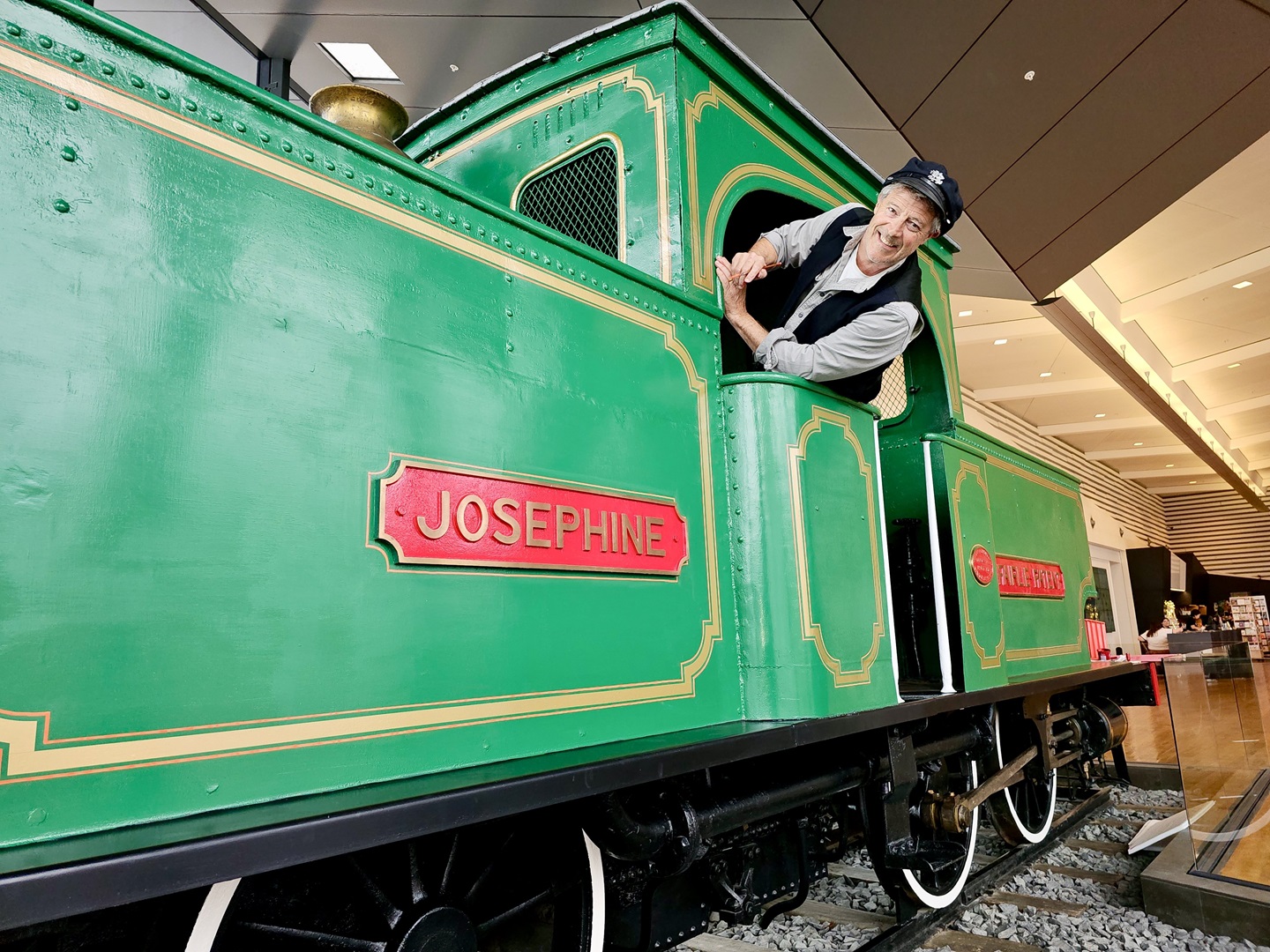
Shem Southerland has been giving historic locomotive Josephine a decorative livery as the old girl celebrates her 153rd birthday.
He has been adding delicate striping to the double Fairlie locomotive on display in the foyer of Toitū Otago Settlers Museum.
"I have been pinstriping and putting gold bands on the engine," Mr Southerland said.
He aimed to match how the old locomotive looked when it was refurbished 100 years ago when it was to be featured in the New Zealand and South Seas International Exhibition of 1925 and ’26.
By the time of the exhibition, Josephine had long been superseded by more modern engines.
The Railway Department planned to display the old engine as an example of one of the earliest locomotives used in the country contrasting it with one of the latest models.
"So they had the oldest engine ... they could get their hands on.
"They also had a brand new state-of-the-art steam locomotive on display as well."

"They still had some of their paint on them. Once you took all the rust and mud out you could see it."
Built at the Vulcan Foundry in Lancashire, England, in 1872, the double Fairlie locomotive began as the first train on the 3ft 6in-gauge Port Chalmers to Dunedin line.
The locomotive was used while the railway from Dunedin to Port Chalmers was being constructed, conveying sleepers and rails along the line as it was extended.
By 1917, the engine had been sent to the scrap yard at the Otago Iron Rolling Mills Company in Green Island. But instead of being turned into scrap, she was retained by the company.
"They got a bit of an attachment to it and so they really couldn't scrap it," Mr Southerland said.
It was used as a reserve boiler until the Railway Department gave it a cosmetic refurbishment so it could serve as a static display at the exhibition.
After the exhibition closed, the Otago Iron Rolling Mills Company presented Josephine to the Otago Early Settlers Museum.















